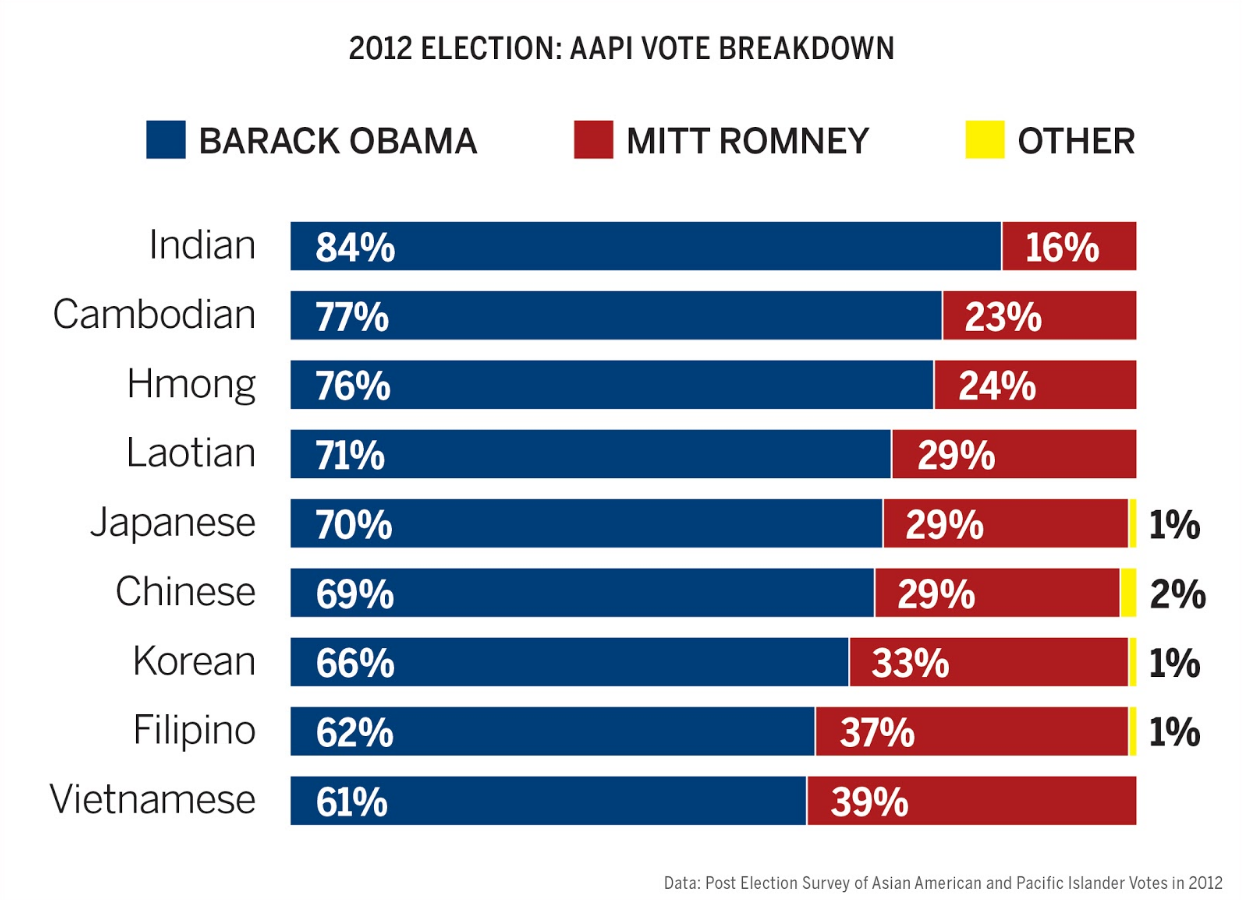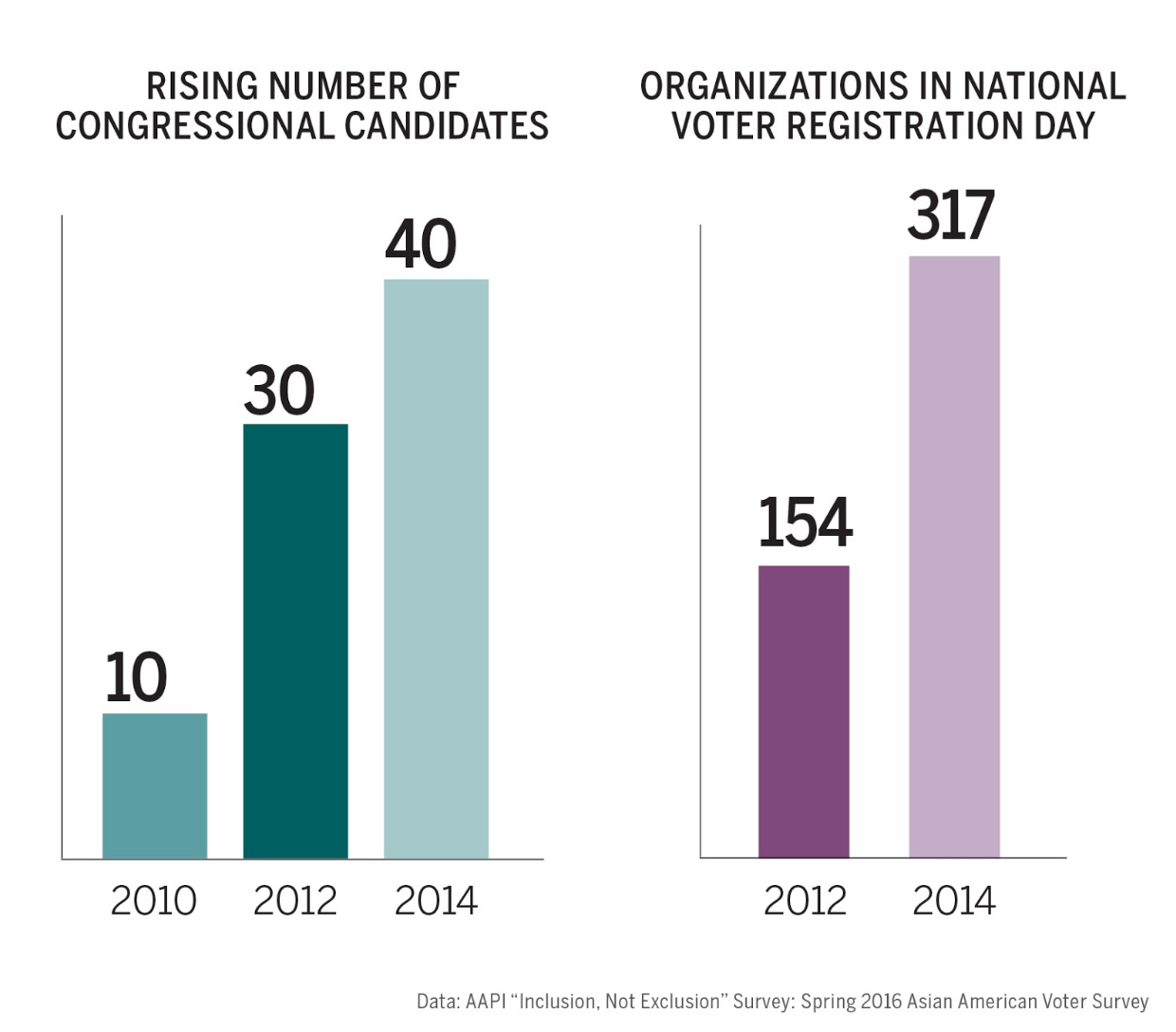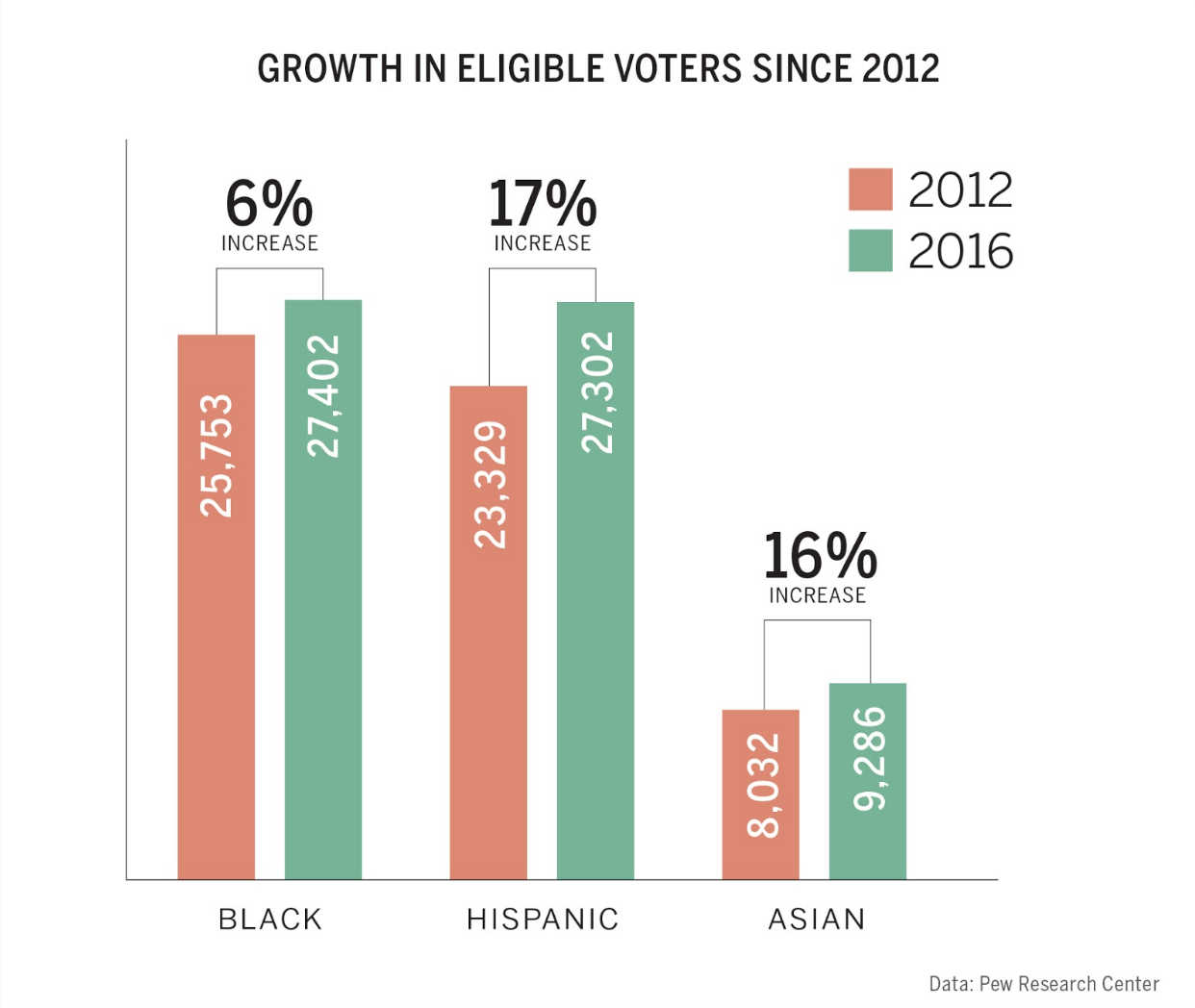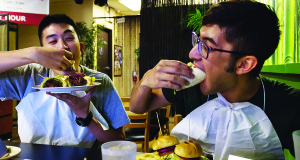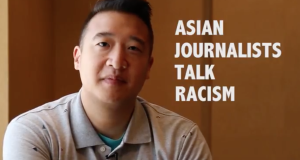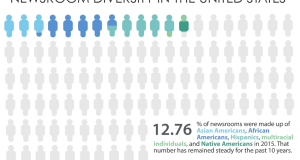With Election Day looming in a few months, here’s a look at the growth of the Asian American electorate and the comparison of their political views from the last election to now.
The 2012 election
Four years ago, more than two-thirds of Asian Americans and Pacific Islanders voted for President Barack Obama.
The AAPI vote, which wasn’t even close, resulted in more than half of Asian Americans voted for Obama over former Massachusetts governor Mitt Romney, the 2012 Republican nominee, according to a 2012-post election survey by AAPI Vote.
The president also won every segment of the Asian American and Pacific Islander populations.
This includes the Vietnamese and Filipino populations, who have historically voted more Republican.
But Obama’s win didn’t speak to the electorate’s party identification — nearly half of Asian American and Pacific Islander registered voters identified as independent or undecided.
In short, their vote was important in deciding the 2012 election. Asian Americans were particularly a crucial vote in three key swing states: Florida, Virginia and Nevada.
The immigration factor
In 2013, Asian immigrants surpassed Hispanics as the largest group of immigrants in the United States. According to a Pew Research Report, the latest census data at the time recorded that 36 percent of all new immigrants were Asian, compared to 31 percent, who were Hispanic.
The increasing immigration from Asia over the years has been a key factor in the population’s growing electorate. Asian Americans have been growing in their political presence as measured by the growth of registered voters — an average increase of 620,000 in the last three election cycle, as recorded in AAPI’s “Inclusion, Not Exclusion” survey.
Naturalization has also been key for them. Unlike other groups, most growth in the Asian electorate has come from naturalizations – immigrants becoming U.S. citizens. Since 2012, 60 percent of new Asian eligible voters have gained the right to vote by this means. By comparison, 26 percent of new Hispanic eligible voters came from naturalizations during this time.
But it’s not just the voters. The rise in AAPI civic participation is also due to the growing involvement of both community organizations and the growing number of AAPI elected officials over the years.
They broke records, too. In 2014, the National Asian Pacific American Political Almanac, published by the UCLA Asian American Studies Center, reported that more than 4,000 Asian Americans currently hold public office in 39 states and federal government — the highest it has ever been.
2016
Whites have had the least growth in eligible voters since 2012, making the 2016 electorate the most diverse electorate the country has ever had.
By comparison to other races, Asian Americans have also had the second largest increase in voters, just behind the Hispanic population.
AAPI’s Spring 2016 survey shows that 62 percent of Asians have a favorable few of Hillary Clinton, while 26 percent have an unfavorable view of her.
As for Donald Trump, the report also stated that 61 percent have an unfavorable view of Donald Trump, while only 19 percent have a favorable view of him. Filipinos had the highest percentage of total favorability toward Trump at 23 percent, while Koreans had the highest percentage of total unfavorability at 81 percent.
Asian Americans are also starting to identify with a party. Since the last election, more Asian Americans are have registered as Democrats, while the number of those identifying as Republican dropped 3 percent.
In conclusion
The Asian American electorate is one of the fastest growing groups in the country, which is partly due to naturalizations and the presence of Asian Americans in public office. While they are starting to lean slightly Democratic, a good number still identify as independent or undecided and can vote for either major party in future elections.
 VOICES Publishing from the AAJA National Convention
VOICES Publishing from the AAJA National Convention



